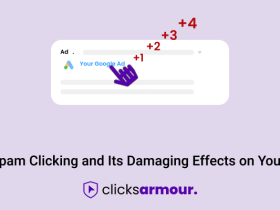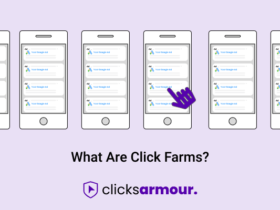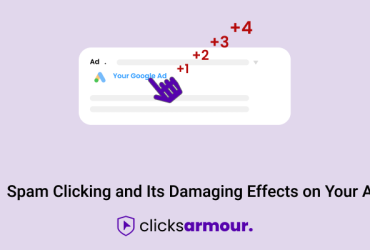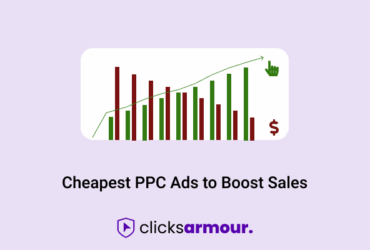How much money are you making from each customer? It’s one of the most important questions to ask yourself as an entrepreneur, and the answer might be shocking at first glance. Cost per visit calculates how much it costs you to acquire and then serve one customer.
Cost per visit (CPV) is a metric that measures the cost of acquiring a new visitor to your website. This metric is important because it allows you to track the ROI (return on investment) of your marketing campaigns and determine whether or not they are effective.
Cost per visit is an important metric that every business owner should pay attention to. To calculate your CPA, you’ll need to know how much it costs you to acquire each of your customers and then divide that number by the number of times each customer comes back to you (i.e., visits or purchases).
Because different businesses bring in revenue in different ways (e.g., fees vs. one-time purchases), you can’t just use your revenue as the basis of your calculations.
While CPV can be calculated in a number of ways, the most common method is to divide your total marketing spend by the number of new visitors to your site.
How to Calculate CPV
There are a few different methods that you can use to calculate your CPV, but the most common is to divide the total marketing spend by the number of new visitors to your website.
The cost per visit is the amount of money a company spends on marketing or advertising for each new customer it acquires. Cost per visit can be calculated by dividing the total cost of all promotional activities by the total number of customers acquired through those activities.
The cost in this equation includes your advertising budget, expenses related to any giveaways you may have made, and any other marketing costs (posters, flyers, brochures, etc.). The visits in this equation refer to how many people you need to spend that money to acquire.
It’s important to know your cost per visit so that you can calculate whether you’re getting a good return on your marketing investment or not.
For example, if you spend $100 on a Facebook ad campaign and that campaign results in 100 new visitors to your site, then your CPV would be $1.
To calculate Cost Per Visit, you must first calculate the cost of your marketing. The simplest way to do this is to divide the total amount spent on marketing by the number of customers acquired.
For example, if you spend $1000 on marketing and acquire 20 customers, then your Cost Per Visitor is $50. If you get 10 leads for $500, that would be a Cost Per Lead of $50, and so on.
Next, divide your revenue by the number of visitors you receive in a month. Let’s say you have 10 visitors and make $100 from them in a month; that would be an average profit of $10 per visitor. Every customer can visit you twice before they leave or come back.
Another way to calculate CPV is to take your total marketing spend and divide it by the number of conversions that you receive from that campaign.
For example, if you spend $100 on a Facebook ad campaign and that campaign results in 10 sales, then your CPV would be $10.
Why is CPV Important?
CPV is an important metric because it allows you to track the ROI (return on investment) of your marketing campaigns. If your CPV is low, then that means you are getting a good return on your investment.
However, if your CPV is high, then that means you need to reevaluate your marketing strategy because you are not getting a good return on your investment.
What Does It Mean for Your Business?
It’s important to understand how to calculate Cost Per Visit, or CPV because it will help you decide on the best marketing channels for your business.
Your CPV is just the total cost of acquiring a customer (costs like advertising) divided by the number of visits made by that customer.
So, if you spend $100 in advertising and your customers come back 5 times, your CPV is $20 ($100 / 5 = $20). If your CPV is high or low and want to improve it, there are a few things you can do.
How Can You Improve Your Cost Per Visit?
There are a few things you can do to improve your cost per visit. The first, and most obvious is price. If you’re charging too much, customers won’t feel like they’re getting a bargain and will be less likely to come back again.
To combat this, try lowering your prices and see if that boosts the number of visitors. Make sure though that you’re still making enough money off each customer to be able to make a profit in the long run.
You should also take into account marketing costs. Marketing on Facebook or other social media sites can help bring in more people to your business but it also costs money to advertise on those platforms.
So how do you calculate the cost per visit correctly? Simply divide your total monthly expenses by the total number of visits during that same time period.
For example, let’s say during the month of May, you had 20 people walk through your door and spent $500 on marketing (Facebook ads). Your equation would be as follows: $500 divided by 20 = $25 average for each customer who walked through your door during May.
Conclusion
CPV is a key metric in the world of online advertising. It allows you to track the ROI for your campaigns and make necessary adjustments to ensure that you are getting a positive return on your investment.
By understanding what CPV is and how to calculate it, you can take your online advertising efforts to the next level.
It’s also important to understand where your customers are coming from more importantly if the clicks your ads are getting are from genuine people or bots. The best way to prevent fraudulent clicks is to stop them before they happen.
There are a few ways you can do this. For starters, make sure that the customer is required to enter a captcha code while clicking on your ads. This will help ensure that the person entering the order is a real person and not someone who’s trying to click through without paying anything.
Another great option is to use a fraud click prevention service such as ClicksArmour. This will ensure that you don’t waste your advertising budget on fraudulent clicks.
Click here to find out how ClicksArmour can help you save your ad expenditure from fake and bot clicks!







